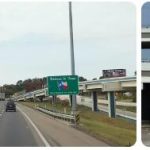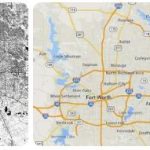Wichita Falls, Texas
Wichita Falls is a small city in the US state of Texas. The city has 103,000 inhabitants and an agglomeration of 149,000 inhabitants (2021).
Introduction
Wichita Falls is located in northern Texas, near the Oklahoma border, about 200 miles northwest of Dallas. The town is located in the prairies, not far from the Red River. The city is located on the Wichita River, a small river that originally had a waterfall on site, but was swept away in a flood in 1886. Unlike many other Texas cities, Wichita Falls’ population is constant. The city grew particularly strongly in the 1950s with the opening of Sheppard Air Force Base and reached 102,000 inhabitants in 1960. After that, the population decreased slightly until the 1990s, and has seen very limited growth since then.
Road network
The road network of the Wichita Falls region.
According to answerresume, Wichita Falls has a remarkably extensive highway network for a city of its size. Although Wichita Falls is not directly connected to other Texas cities by freeway, it is the starting point of Interstate 44, which runs north to Oklahoma City. US 287 is the main connection to other Texas cities, namely Fort Worth in the southeast and Amarillo in the northwest. US 287 has been run as a freeway around Wichita Falls. The US 277 and US 281 have also been constructed as a freeway in the south of the city. In addition, there is the Spur 325 to Sheppard Air Force Base.
Some notable features of the Wichita Falls highway network are the overpasses of US 287 through Downtown, where the lanes are split over a length of 10 city blocks, with a width of 1 city block. On its south side is a partial stack interchange with US 277. The highways range in width from 2×2 to 2×4 lanes. The widest is I-44 northwest of Downtown.
History
With the opening of Sheppard Air Force Base in 1941, the importance of the city of Wichita Falls increased and the city began to grow. It is still by far the largest employer in Wichita Falls. In 1954, the issuance of bonds to obtain various right-of-ways for the construction of freeways was approved in a referendum. Immediately afterwards, the construction of the highways began. Wichita Falls’ first highway was I-44 and Spur 325 between downtown and Sheppard Air Force Base, which opened in 1958-1960. In 1962, US 287 continued as a freeway to the west. In 1964, I-44 reached the Oklahoma border, and US 287 opened to the east of Wichita Falls in 1968, followed by US 281 to the south of the city in 1969.
Most highways were therefore built in the 1960s. A somewhat later highway was US 277 in southwest Wichita Falls, which opened in 1989. In addition, for years there was a significant missing link for through traffic, namely at the center of Wichita Falls, traffic on US 287 over a length of 10 city blocks also had to pass 10 traffic lights. This situation is similar to that of Amarillo. In 2001, two overpasses were built over existing city roads, over which US 287 with 2×3 lanes ran as a freeway. In about 2007, the stack interchange between US 277 and US 287 opened. In 2009, US 277 was extended a few miles in the extreme southwest of Wichita Falls.
Traffic intensities
Wichita Falls is a traffic jam-free conurbation. The highway network is very adequate, in fact it has one of the largest numbers of lane kilometers by population of any city in the United States. The highest intensity is measured on the viaducts of the US 287 near downtown with 74,000 vehicles per day. The connecting I-44 has 60,000 vehicles per fsh. After that, US 277 from the southwest is the busiest, with up to 72,000 vehicles. In eastern Wichita Falls, 38,000 vehicles drive on US 287 and 24,000 vehicles on US 281. US 287 toward Amarillo has 21,000 vehicles and I-44 toward Oklahoma City has 24,000 vehicles on the northern edge of Wichita Falls.










